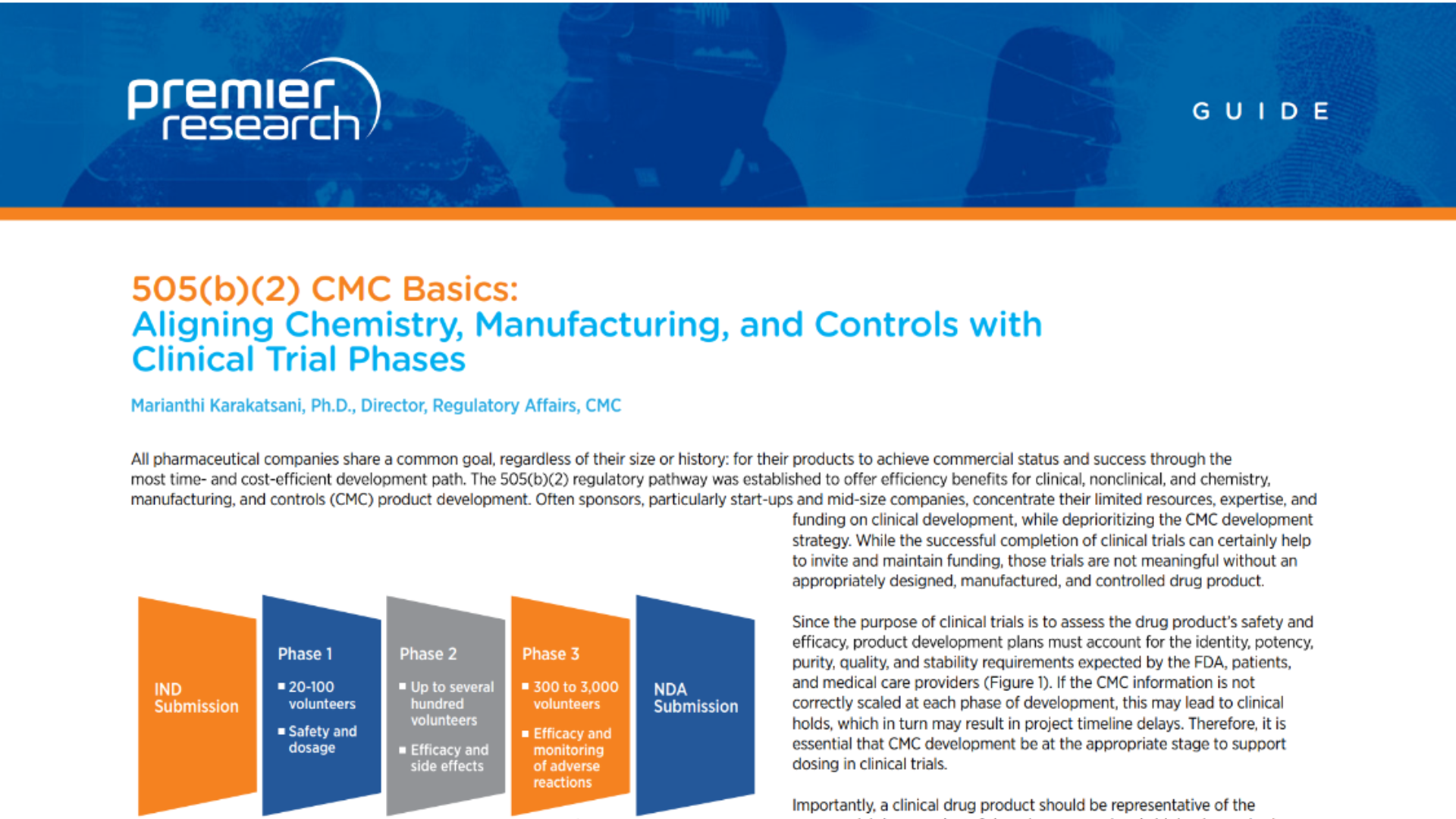All pharmaceutical companies share a common goal, regardless of their size or history: for their products to achieve commercial status and success through the most time- and cost-efficient development path. The 505(b)(2) regulatory pathway was established to offer efficiency benefits for clinical, nonclinical, and chemistry, manufacturing, and controls (CMC) product development. Often sponsors, particularly start-ups and mid-size companies, concentrate their limited resources, expertise, and funding on clinical development, while deprioritizing the CMC development strategy. While the successful completion of clinical trials can certainly help to invite and maintain funding, those trials are not meaningful without an appropriately designed, manufactured, and controlled drug product.
We’ll answer questions like:
Continue this conversation with a Premier expert
Learn more about our strategic capabilities.

